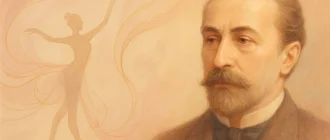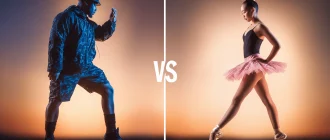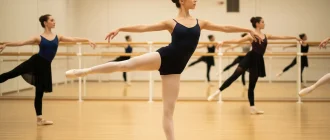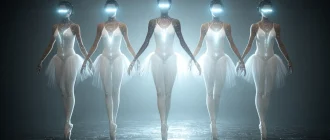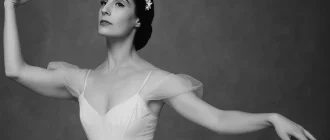The English National Ballet, founded in 1950, is a leading ballet company in the UK. It is celebrated for its impressive global tours and groundbreaking productions. Under the direction of Aaron S. Watkin, the troupe blends classical and modern styles. This article covers its most iconic performances, Tamara Rojo’s role in its evolution, community engagement, and future directions for the English National Ballet.
Key Takeaways
- The English National Ballet’s in-the-round production of Swan Lake, choreographed by Derek Deane, has captivated over 500,000 global audiences with its grandeur, detailed stagecraft, and immersive experience enhanced by live music from the English National Ballet Philharmonic.
- Tamara Rojo, the artistic director, modernizes ballet by integrating AI and contemporary elements, as exemplified in her adaptation of ‘Raymonda,’ where she reimagines classic ballet narratives to maintain relevance in the digital era.
- The English National Ballet’s revival of Giselle, true to Mary Skeaping’s 1971 choreography, continues to captivate audiences with its rich psychological themes and standout performances, highlighting the enduring power of classical ballet.
| Period/Year | Key Developments | Notable Achievements | Artistic Leadership |
|---|---|---|---|
| 1950-1960s | Formation and Early Years | Founded in 1950 as Festival Ballet by Alicia Markova and Anton Dolin, it aimed to bring ballet to the masses. | Alicia Markova, Anton Dolin |
| 1970s | Expansion and Rebranding | Rebranded as English National Ballet in 1989, it focuses on increasing its national and international presence. | John Field |
| 1980s | Rising International Presence | Participation in international tours, collaborations with leading choreographers, and innovative productions. | Peter Schaufuss |
| 1990s | Embracing Diversity and Innovation | Introduction of diverse repertoires, including contemporary works, enhances the company’s versatility. | Ivan Nagy, Derek Deane |
| 2000s | Modernization and Artistic Growth | Continued innovation with groundbreaking performances, expanding educational outreach, and audience engagement. | Matz Skoog, Wayne Eagling |
| 2010s | Global Recognition and Artistic Excellence | International acclaim through tours and performances; focus on both classical and contemporary ballet. | Tamara Rojo |
| 2020s | Commitment to Diversity, Equity, and Inclusion (DEI) | Introduction of DEI initiatives, new productions reflecting contemporary issues, and enhanced community engagement. | Tamara Rojo, Aaron Watkin |
| Artistic Milestones | Groundbreaking Productions and Repertoire | Notable productions include Giselle (Akram Khan), Romeo & Juliet, Swan Lake, and The Sleeping Beauty. | Tamara Rojo, Aaron Watkin |
| Community Impact | Education and Outreach | Pioneered community programs such as Dance for Parkinson’s, Ballet Active, and engagement with young audiences. | Tamara Rojo, Aaron Watkin |
| Awards and Honors | Accolades and International Recognition | Multiple Olivier Award nominations, recognition at international ballet competitions, and widespread critical acclaim. | Tamara Rojo, Aaron Watkin |
This table highlights the key developments, artistic leadership, and contributions of the English National Ballet throughout its history.
The Grand Spectacle: English National Ballet’s Swan Lake
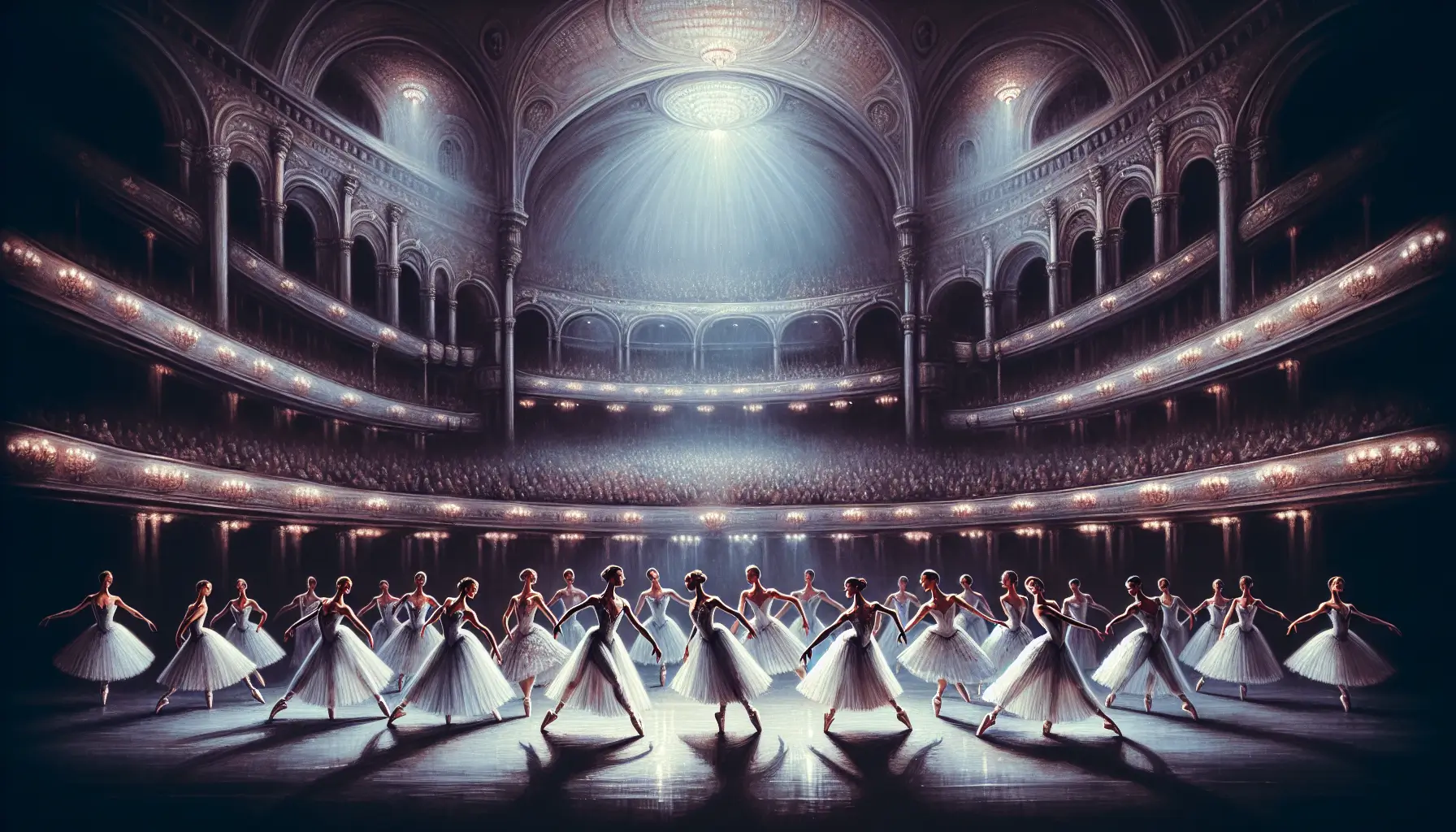
In ballet, few productions capture the imagination quite like Swan Lake. Since its premiere in 1997, the English National Ballet’s performance, choreographed and directed by Derek Deane at the Royal Albert Hall, has mesmerized audiences by transforming the venue into a magical lake. This in-the-round production has been seen by over 500,000 people worldwide, a testament to its enduring appeal.
The spectacle of Swan Lake is brought to life by more than 100 performers, including 60 dancing swans, creating a visual feast that lasts for 2 hours and 50 minutes. The entire performance is elevated by the live rendition of Tchaikovsky’s memorable score by the English National Ballet Philharmonic, which adds a dynamic layer to the already stunning stagecraft.
The combination of director Julian Crouch’s design, Daniel Brodie’s projections, and Basil Twist’s puppetry creates an immersive experience that transports the audience into a state of enchantment.
The magic of this production lies not only in its grandeur but also in its attention to detail. From the intricate costumes to the atmospheric lighting, every element is meticulously crafted to enhance the storytelling. As the spirits of the seasons fill the stage, the audience is drawn into a narrative that is as much about nature’s magic as it is about human emotions.
In seamlessly blending tradition with innovation, this production of Swan Lake exemplifies the English National Ballet’s capacity to deliver timeless and contemporary performances.
Tamara Rojo: Innovating Ballet for Modern Audiences

Tamara Rojo, the artistic director of the English National Ballet, has been a transformative force in the ballet world. Her innovative approach incorporates AI and contemporary elements to maintain ballet’s relevance in an era dominated by modern entertainment platforms like Netflix. Rojo’s vision is to bridge the gap between the world of classical ballet and the digital era, ensuring this timeless art form resonates with today’s audiences.
One of Rojo’s remarkable projects is her reimagining of ‘Raymonda.’ In this adaptation, she propels the action from the medieval age to the nineteenth century, presenting Raymonda as Florence Nightingale. This shift modernizes the narrative and adds depth to the characters, making the story more relatable to contemporary viewers.
Through such creative endeavors, Rojo demonstrates that ballet can evolve while honoring its rich history, ensuring its place in the cultural landscape for future generations.
A Timeless Classic: Giselle by English National Ballet
Preserving the essence of a classic while captivating modern audiences, the English National Ballet’s revival of Giselle, choreographed by dancer Mary Skeaping, is a masterclass in ballet production. Originally choreographed by Skeaping in 1971, this production is considered as close as possible to the 1841 original.
The collaboration between Skeaping and Tamara Karsavina, a leading dancer from pre-revolutionary Russia, ensures that the choreography stays true to its roots.
Giselle’s themes of social class, love, betrayal, despair, forgiveness, and redemption make it one of the most psychologically complex narrative ballets. David Walker’s designs for the first act depict an idyllic vision of Rhineland peasant life during the last day of the wine harvest, setting a vibrant and festive tone. In stark contrast, the second act delves into the ghostly moonlit realm of the Wilis, where jilted young brides-to-be seek revenge on men.
The 2024 revival features performances by Katja Khaniukova as Giselle and Aitor Arrieta as Albrecht. Their emotional depth and technical prowess bring the characters to life, making this production a must-see for ballet enthusiasts. The English National Ballet’s Giselle is a testament to the enduring power of classical ballet, proving that its themes and artistry remain relevant and compelling.
Annual Festive Rivalry: The Nutcracker Face-Off
Every holiday season, ballet enthusiasts witness an exciting rivalry as the English National Ballet and the Royal Ballet each present their unique renditions of The Nutcracker.
The English National Ballet’s production:
- Set in a country house with ice skating in front
- Offers a unique twist on this beloved classic
- The diverse performances representing different parts of the world add a rich tapestry of styles to the narrative.
In contrast, the Royal Ballet’s Nutcracker at the Royal Opera House is renowned for its elaborate and magical set designs, making it a visual delight. While the Royal Ballet’s performance is often recommended for its crisp choreography and seamless connection between music and dance, it also comes with higher ticket prices.
Despite occasional missteps and timing issues, the English National Ballet’s version retains its traditional magic, with Clara’s performance receiving significant praise. This annual face-off showcases the unique strengths of both companies, offering audiences a choice between two enchanting interpretations of a holiday favorite.
Celebrating Creativity: Our Voices Mixed Bill
Celebrating creativity and the power of music, the English National Ballet, with a rich history dating back to the Vic Wells Ballet era, presents the Our Voices mixed bill. This ambitious program features:
- George Balanchine’s ‘Theme and Variations,’ which uses Tchaikovsky’s music to create intricate patterns with dancers
- The feminist masterpiece ‘Les Noces’
- A premiere set to Strauss’ Four Last Songs
This mixed bill showcases the company’s versatility and artistic range.
David Dawson’s piece, set to Strauss’s Four Last Songs, features six pairs of dancers in nude body suits performing anguished movements, highlighting the emotional depth and physicality of contemporary ballet. By bringing together dancers from such diverse works, the English National Ballet demonstrates its commitment to celebrating creativity and pushing the boundaries of traditional ballet.
Honoring a Legend: Patricia Ruanne Obituary
Former English National Ballet dancer Patricia Ruanne had a profound impact on the ballet world. Known for her expressive and versatile performances on stage, Ruanne danced around the world, including:
- Europe
- Australia
- Hong Kong
- China
She was nominated for an Olivier Award for Outstanding Achievement in Dance for her portrayal of Tatiana in John Cranko’s Onegin.
During her illustrious stage career as a ballerina with the English National Ballet, Ruanne took on significant lead roles like:
- Aurora in The Sleeping Beauty
- Kitri in Don Quixote
- Odette/Odile in Swan Lake
- Giselle
She also created the lead role of Juliet in Rudolf Nureyev’s stage production of Romeo & Juliet in 1977, performing opposite Nureyev himself.
Ruanne’s legacy inspires dancers and audiences alike, reminding us of the enduring power of dedication and artistry.
Cinderella: A Tale of Grace and Grandeur
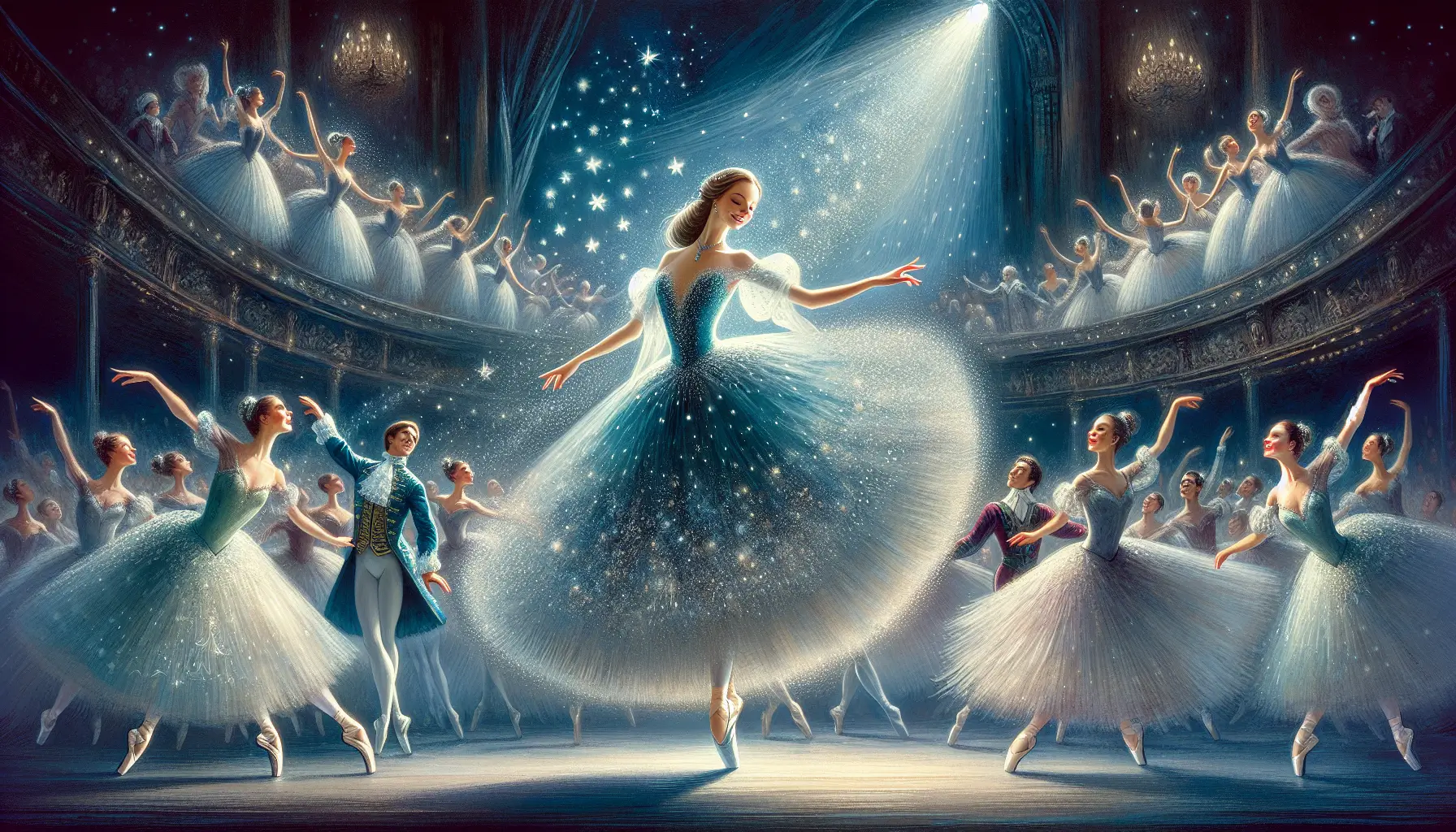
Showcasing the grace and grandeur of the English National Ballet, Christopher Wheeldon’s production of Cinderella captivates with its enchantment. The cast includes:
- Erina Takahashi, who leads with her finely tuned grace
- Francesco Gabriele Frola, who plays a sensitive Prince with quiet confidence
- Ken Saruhashi, who brings bright energy as the high-kicking sidekick
- Sarah Kundi delivers an amusing portrayal of the drunk stepmother
These performances add layers of charm and humor to the production.
Wheeldon’s version introduces unique narrative elements, such as the backstories of Cinderella and the Prince, enhancing their characters’ depth. Instead of traditional elements like pumpkins and fairy godmothers, the story is guided by the Fates, four men who influence Cinderella’s destiny. The ball scene, featuring scores of dancers waltzing to Prokofiev’s music, is a highlight that captures the elegance and grandeur of this timeless tale.
Pioneers of Dance: Bronislava Nijinska’s Legacy
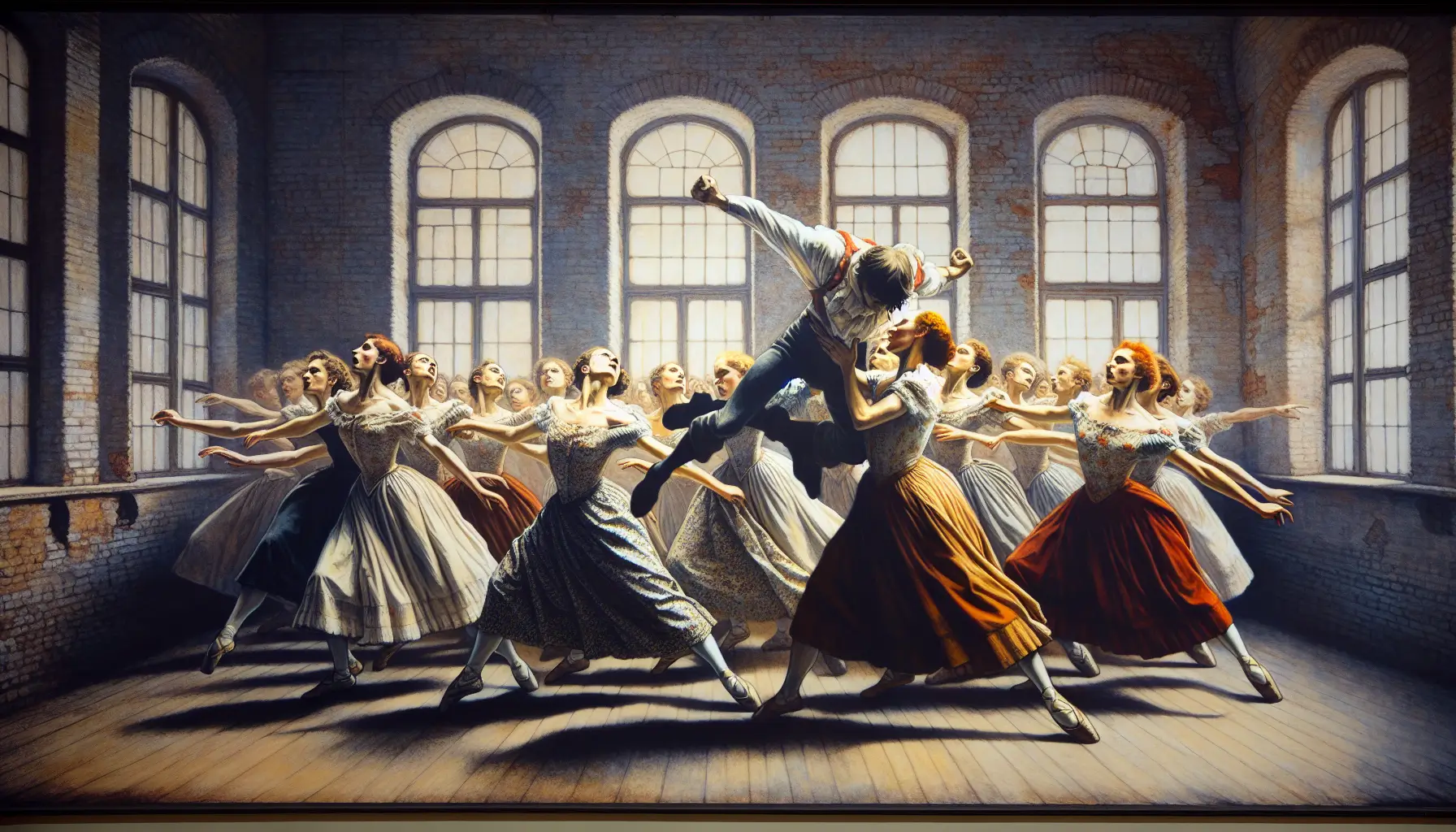
Bronislava Nijinska’s groundbreaking ballet Les Noces is celebrated as a feminist masterpiece and a testament to her creative genius. Created in 1923 for Sergei Diaghilev’s Ballets Russes, Les Noces is notable for:
- Its compositional brilliance
- It’s complex musical scores by Stravinsky, incorporating Russian folk songs and liturgical chants.
- It uses an unusual musical ensemble of four pianos and a large chorus.
Nijinska’s choreography often drew on the past while looking to the future, forging a powerful voice for women. In Les Noces, her sympathy lies with the woman, focusing on the bride’s loss and her mother’s sorrow as the bride leaves her family. Phyllida Barlow’s set design, featuring a ‘ruined theatre’ with a net of rocks looming above, adds a haunting visual element to this feminist masterpiece.
Nijinska’s legacy continues to inspire and challenge the boundaries of traditional ballet.
Emerging Dancer 2022: Fostering New Talent
Demonstrating the company’s commitment to nurturing new talent, the English National Ballet hosts the Emerging Dancer 2022 event. Hosted by director Jordan Lee, with interval hosts Sarah Kundi and director Giorgio Garrett, the event featured performances by the English National Ballet Philharmonic. The 2022 Emerging Dancer Award winner was Eric Snyder, who was impressed by his classical pas de deux from Sleeping Beauty and a contemporary duet, Cha Cha and Tiara.
Other notable performances included:
- Ivana Bueno and Victor Prigent’s pas de deux from Le Corsaire
- Ashley Coupal and Noam Durand’s classical pas de deux from Coppélia
- a contemporary work NEFES
The Corps de Ballet Award went to Emilia Cadorin, while guest artist Precious Adams won the People’s Choice. The event’s judges, including Artistic Director Tamara Rojo, emphasized the importance of nurturing new talent and securing the future of ballet.
Engaging the Community: Adult Dance Classes
Promoting community engagement and lifelong learning, the school of the English National Ballet offers adults a diverse range of adult dance classes through various locations within their school. From Absolute Beginners Ballet to Advanced Ballet classes, there is something for everyone, regardless of their experience level. These classes allow adults to explore and share their passion for dance while improving their skills and fitness.
In addition to traditional ballet classes, the ENB offers specialized programs like Dance for Dementia and Dance for Parkinson’s, which aim to engage the community and promote well-being. BalletFit courses combine ballet techniques with fitness exercises, and Contemporary Dance classes are also available for those interested in modern dance styles.
By offering dancers diverse dance programs, the English National Ballet ensures that dance remains accessible and enjoyable.
The History and Future of London Festival Ballet
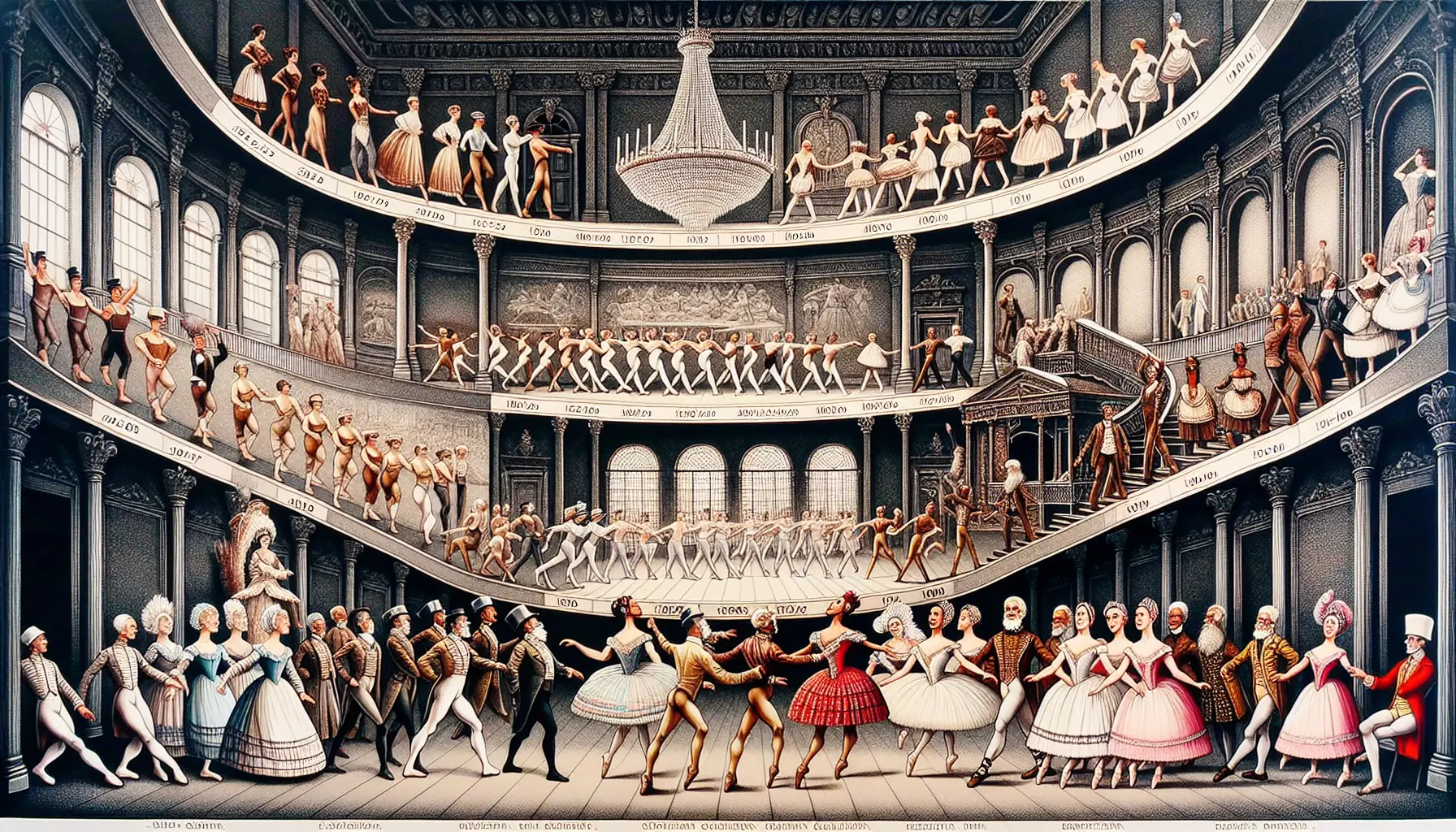
Founded in 1950 by Alicia Markova and Anton Dolin, the English National Ballet, initially known as the London Festival Ballet, boasts a rich history of royal ballet in Great Britain. Inspired by the Festival of Britain, the name signified the company’s expanding presence and ambition. Under Dolin’s leadership, the company undertook its first international tour in 1951, setting the stage for global recognition.
Patricia Ruanne joined and founded the company in 1973, making significant contributions as a dancer and later as a ballet mistress. In 1984, Peter Schaufuss became the director and renamed the company the English National Ballet, aligning its identity with the English National Ballet and its international aspirations. The ENB became an Associate Company of Sadler’s Wells in 2014, further cementing its status as a leading national ballet company.
Today, under the artistic direction of Aaron S Watkin, the English National Ballet continues to thrive and innovate, building on its storied past to create a company with a bright future. With superbly danced productions and a commitment to nurturing new talent, the ENB remains a beacon of excellence in ballet.
The Role of Guest Artists in Elevating Performances
Guest artists, with their high level of talent and professionalism, are instrumental in enhancing the performances of the English National Ballet. These distinguished guest artists often take on leading roles, inspiring the audience and the company’s dancers with their exceptional skills and presence. Sourced from prominent ballet companies worldwide, guest artists add prestige and diversity to the productions they join.
The collaboration with guest artists leads to unique and memorable performances, blending different styles and enhancing the overall creativity of the company’s repertoire. Their interactions backstage also contribute to the learning experience and morale of the resident dancers. By introducing new choreography and pushing the boundaries of traditional ballet, guest artists help keep the English National Ballet’s productions fresh and innovative.
The Influence of Anton Dolin: Co-Founder and Visionary
A visionary leader, Anton Dolin, co-founder and inaugural artistic director of the English National Ballet, laid the groundwork for the company’s success. Along with Alicia Markova, Dolin founded the national ballet show company in 1950, initially calling it Gala Performances of Ballet. His vision was to establish a touring company that would bring ballet to audiences nationwide and internationally, thereby democratizing access to this art form.
Dolin’s directorship of the English National Ballet from 1950 to 1962 was instrumental in establishing the company’s reputation and setting the stage for future growth. His dedication to the art of ballet and commitment to excellence inspired generations of dancers and helped shape the English National Ballet into the esteemed institution it is today.
Summary
The English National Ballet’s journey from its origins as the former school of London Festival Ballet to its current status as a world-renowned institution is a testament to its enduring excellence and innovation. Through breathtaking productions like Swan Lake and Cinderella, the company has consistently pushed the boundaries of ballet, blending tradition with modernity.
Visionaries and principals like Tamara Rojo and Anton Dolin have played pivotal roles in shaping the ENB’s artistic direction, ensuring its relevance in the contemporary cultural landscape.
The English National Ballet’s commitment to nurturing new talent and engaging the community remains unwavering as we look to the future. Through initiatives like the Emerging Dancer event and adult dance classes, the ENB continues to inspire and uplift both a generation of audiences and dancers.
The legacy of the first generation of English National Ballet is one of grace, grandeur, and a relentless pursuit of artistic excellence.
Frequently Asked Questions
What makes the English National Ballet’s production of Swan Lake unique?
The English National Ballet’s production of Swan Lake is unique among festival ballets because it is an in-the-round production at the Royal Albert Hall, featuring stunning costumes, atmospheric lighting, over 100 performers, and a live orchestra.
How has Tamara Rojo modernized ballet for contemporary audiences?
Tamara Rojo has modernized ballet by incorporating AI and contemporary elements, and reimagining classic ballet stories with modern contexts, such as her adaptation of ‘Raymonda’. This brings a fresh perspective and relevance to ballet for a generation of contemporary dancers and ballet audiences.
What are some of the unique features of the English National Ballet’s Giselle?
The English National Ballet’s Giselle features psychological complexity, exploring themes of love, betrayal, and redemption, and stars Katja Khaniukova and Aitor Arrieta in the 2024 revival.
How does the English National Ballet engage with the community through dance classes?
The English National Ballet engages with the community through school and adult dance classes, including specialized programs like Dance for Dementia and Dance for Parkinson’s, promoting community engagement and lifelong learning through dance.
What was Anton Dolin’s vision for the English National Ballet?
Anton Dolin’s vision for the English National Ballet was to establish the company as a touring national ballet and ensemble, bringing high-quality performances to audiences nationwide and internationally, setting the stage for its future success.



